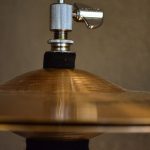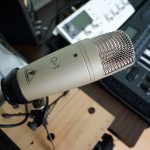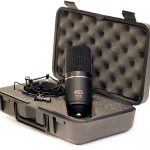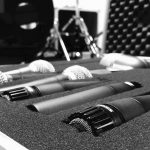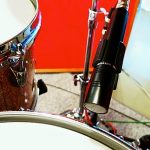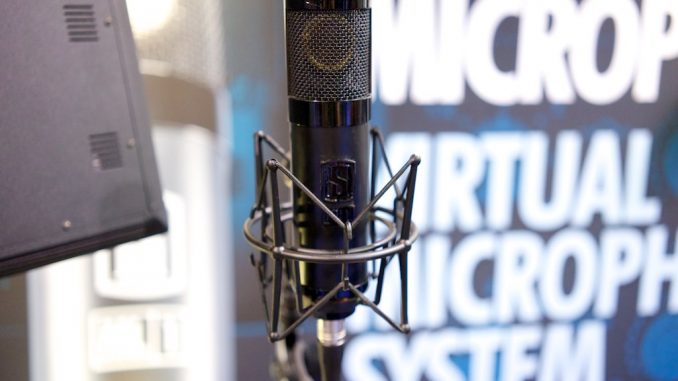
A condenser microphone is a popular variety of microphone. Condenser means “capacitor” and the term condenser comes from an electronic term. The capacitor component is used to store energy. It creates an electrostatic field. The term “condenser” isn’t actually used in electronics anymore. However, it is still what we use to describe this type of microphone.
In real terms, what does that mean for a microphone? What are the differences between condenser and dynamic microphones? We explore more in this post, where we are answering questions you have about condenser mics.
A condenser microphone needs power. This is one of the key differences to a dynamic microphone. If you are planning to buy a condenser microphone for recording or live use, you may need to provide power to it. You can do this from an audio interface or mixing desk.
Some USB condenser mics have this phantom power provided by your computer. Some condenser microphones have a battery attached to provide the power. The type of power used for these microphones is “phantom power”. If you hear that term in audio circles, don’t worry, it isn’t referring to ghosts.
What Are Condenser Microphones Used For?
The technology that drives condenser microphones is more sensitive than some other microphone types. Dynamic microphones are more rugged but do not provide the same level of detail in the audio they pick up.
This means condenser microphones are often used when you need detail, but aren’t as good if you need something rugged that can take a beating. You will find them in studios and home studios rather than regularly used on stages. A microphone can take far more punishment on stage. If you drop a condenser mic it is more likely to break.
A condenser microphone responds to the dynamics of playing. The quieter sections and louder sections are picked up better, and so are some more nuanced and detailed sounds. Ultimately, better quality recordings come from condenser microphones when compared to dynamic.
Of course, this depends on getting the right condenser microphone. There is a lot of choice out there if you are looking for one of these microphones. For specific models of microphone for different uses, we’ve provided guides to mics for drum overheads, hi-hats and more.
How Does a Condenser Microphone Work?
You don’t need to totally understand all of the science behind microphones to use them. However, it may help you to know what is going on.
A “capacitor” or “condenser” is usually two metal plates close together. In the case of condenser mics, it means a solid metal plate with a diaphragm in close proximity. The diaphragm may also be called a membrane. This is often made out of mylar or sometimes metal foils.
Sound waves vibrate the diaphragm and it will move as a result. The space between the plate and the membrane obviously changes according to the sound. This converts the audio into an electrical signal which you can then broadcast or record.
The signal needs an impedance converter, which boosts the signal current so it is easier to communicate with other pieces of equipment. This is why they need power.
Condenser Microphone Pros and Cons
For a simple overview, check out the pros and cons of condenser mics. We’ve listed these below to help you to make a simple decision on which condenser mic is good for you.
Pros:
- Record more detail than dynamic microphones.
- Better at recording dynamics and nuances of playing.
- Lots of choice of brands and sounds.
- Can record a variety of different instruments.
- Some forms of condenser microphone have inbuilt phantom power. You can find USB condenser mics.
Cons:
- Do not always cope well with high volume applications.
- More likely to break if dropped or hit than dynamic microphones.
- Require phantom power. Usually need to be run through a mixing desk or audio interface.
Hopefully, this has answered plenty of your questions about condenser microphones. So, to put it very simply, condenser microphones are good for detail. Simply put, they are often preferred for recording when dynamic mics may be used live.
Condenser microphones can record vocals, guitar, piano and

